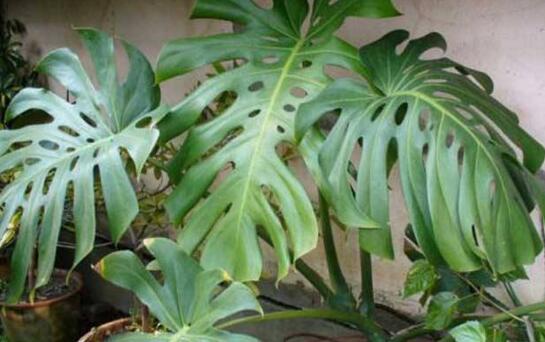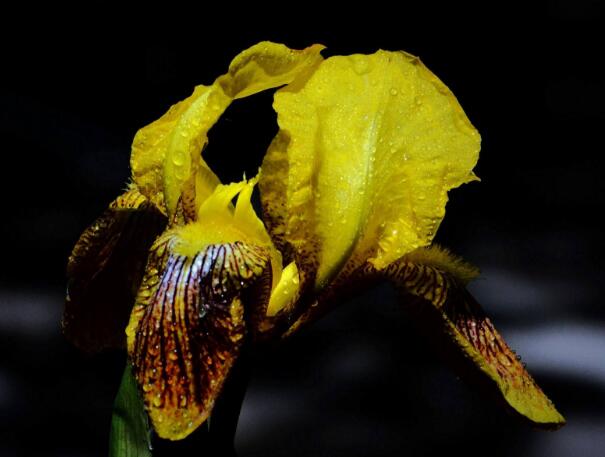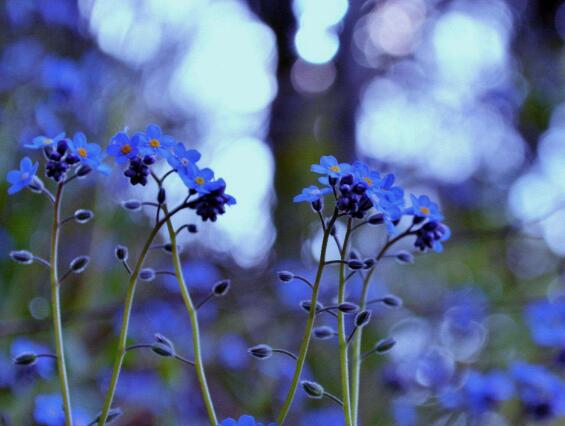What about the yellowing of the bamboo leaves on the back of the tortoise? the maintenance methods and environment are the main reasons.
The leaves of tortoise back bamboo are evergreen all the year round, but if the cultivation method of tortoise back bamboo is improper, it may cause it to turn yellow, so what about the yellow leaves of tortoise back bamboo? In addition to adjusting the maintenance methods, we also need to find the reasons to take the right solutions.
What if the bamboo leaves on the back of the turtle turn yellow?

The yellowing of leaves usually indicates a problem with the health of plants, so what about the yellowing of bamboo leaves on the back of turtles? There are several main causes, namely, soil, watering, light, temperature, fertilizer and diseases and insect pests. Let's learn more about the specific reasons and solutions.
First, watering leads to
1. Long-term water shortage
Tortoise back bamboo prefers a humid environment, if long-term lack of water will not only lead to soil caking, but also stunted due to lack of water. If you find that the leaves turn yellow due to lack of water for a long time, it is usually caused by too little watering.
Treatment measures: water should be watered twice a day in summer, once a day in spring and autumn, and reduce the number of water construction in winter. Do not overwater each time, based on the principle of no stagnant water.
2. Too much watering
If each watering always let the water pass through the roots of the plant, and let it be in a stagnant water environment for a long time, then its leaves will turn yellow, at this time the turtle back bamboo leaves yellow how to do, the method is as follows.
Treatment measures: help the turtle carry the bamboo to change the basin, and reduce the amount of each watering, adopt the principle of dry and wet, basin soil indicates that it is not dry, do not water, stop watering after wetting.
2. Soil
Although tortoise back bamboo does not have high requirements for soil, sticky or slightly sticky suddenly will affect the development of roots, and too much water can not be discharged in time, leading to yellow leaves at first.
Treatment measures: the choice of soil should be slightly acidic, usually should pay attention to loosen the soil or change the basin, to avoid soil consolidation.
Third, lighting
1. Long-term exposure
Some people will keep the turtle back bamboo outdoors or in the courtyard, so there is often a problem, that is, it will be blown in the high temperature in summer, and the leaves will appear the so-called burning yellow phenomenon.
Treatment measures: if it is raised outdoors, it should be shaded when the sun is strong, and when you choose a planting environment, you should try to choose a cool place, because the shade-tolerant plants of the tortoise back bamboo.
2. Lack of light
Tortoise back bamboo is often in a shady environment, thinking that some of the leaves turn yellow ahead of time due to lack of photosynthesis, so it is necessary to let it receive a certain amount of light.
Treatment measures: move the tortoise back bamboo to a place with a certain amount of light and cut off the yellowing withered leaves.
IV. Fertilizer
One of the reasons why the leaves turn yellow is due to the lack of fertilizer, and many people do not like to fertilize the tortoise back bamboo, which is not conducive to the development and growth of the tortoise back bamboo.
Treatment measures: what if the leaves of the tortoise back bamboo turn yellow because of fertilization? The answer is to spray with alum fertilizer water, and then fertilize it regularly.
5. Temperature
The leaves of tortoise-backed bamboo are more likely to turn yellow in winter, because the temperature is generally lower at this time, and tortoise-backed bamboo may be damaged by freezing at 5 degrees.
Treatment measures: move the tortoise back bamboo indoors or in a place with a higher temperature to avoid being exposed to an environment where the temperature is lower than 5 degrees for a long time.
VI. Diseases and insect pests
Diseases and insect pests not only cause the leaves to turn yellow, but also have a fatal effect on the health of the tortoise back bamboo. If it is not taken seriously, it will die quickly.
Treatment measures: usually pay attention to the maintenance of tortoise back bamboo, diseases and insect pests should be treated in time, but more should take reasonable maintenance to prevent.
Conclusion: the reasons that make the leaves of tortoise back bamboo yellowing can be summarized into two kinds, namely, environment and conservation methods. As long as the growth environment is suitable and the maintenance methods are correct, the yellowing of leaves can be avoided.
What if the bamboo leaves turn yellow on the back of the turtle? The solution to the yellowing of bamboo leaves on tortoise back
Many flower friends report that the phenomenon of yellowing of tortoise back bamboo leaves is more serious, what is the reason? How to solve it effectively? Next, the editor will introduce to you in detail the causes and solutions of the yellowing of the leaves of the tortoise back bamboo, to help you better plant the tortoise back bamboo.
The causes of yellowing of tortoise back bamboo leaves and its solutions:
My tortoise back bamboo is sick, the leaf edge of the tortoise back bamboo begins to turn yellow, and there are dry spots on the leaves. Is it dying? How much do I have to water at one time?
Tortoise back bamboo is a kind of evergreen vine, which is often arranged with potted plants at home. It is not troublesome to cultivate turtle back bamboo, but occasionally the leaves of tortoise back bamboo turn yellow if they are not maintained properly. Let's take a look at the causes and solutions of the yellowing of tortoise back bamboo leaves.
The reasons for the yellowing of bamboo leaves on turtle back: 1. Soil discomfort
Phyllostachys pubescens is originally a parasitic plant, and its well-developed root system is fleshy root, which requires high porosity and permeability of soil. Both clayey and micro-clayey soils will affect the growth of roots in different degrees. If the soil permeability is not good or does not change soil for a long time, it may cause soil hardening and affect the respiration of tortoise back bamboo, so that the growth of tortoise back bamboo is poor and the leaves turn yellow.
Solution: family potted turtle back bamboo, the cultivated soil can be mixed with 2 parts of mature loess, 1 part of honeycomb coal ash and 1 part of chicken manure. In this way, it can not only ensure the air permeability of the potted soil, but also meet the fertilizer requirements for growth.
The reasons for the yellowing of tortoise-backed bamboo leaves: 2. Too much or too little watering
More water will cause root rot phenomenon, less water will make the plant lack of water and poor growth, these two cases will cause the yellow leaf phenomenon of tortoise back bamboo.
Solution: the tortoise back bamboo should be watered regularly and thoroughly at one time to keep the surface of the basin soil slightly dry. when the air is dry, sprinkle water on the environment and the leaves of the tortoise back bamboo.
The reasons for the yellowing of tortoise back bamboo leaves: 3. The light is too strong or too dark.
The tortoise back bamboo is resistant to shade, but if it is placed in a shaded environment for a long time, it will affect photosynthesis and turn the leaves yellow. at the same time, the tortoise back bamboo can not be placed in strong light, the strong light will cause the leaves of the tortoise back bamboo to burn and turn yellow.
Solution: tortoise back bamboo should pay attention to shade in summer, it is best to give tortoise back bamboo some scattered light.
The reasons for the yellowing of tortoise-backed bamboo leaves: 4. The temperature is too low.
The suitable temperature for the growth of Phyllostachys pubescens is 20 ~ 25 ℃, and the temperature at night in winter is not lower than 10 ℃ at seedling stage. Mature plants can tolerate 5 ℃ in a short time, and freezing injury is easy to occur when the temperature is lower than 5 ℃, which causes the leaves of Phyllostachys pubescens to turn yellow.
Solution: in winter, the root of the tortoise back bamboo should be properly kept warm to enhance the cold resistance of the plant, but do not put the tortoise back bamboo directly on the radiator or next to the air conditioner.
The reasons for the yellowing of tortoise back bamboo leaves: 5. Too little fertilization.
Iron is a necessary raw material for plants to synthesize chlorophyll. If there is a lack of iron in soil or fertilizer, it will affect the synthesis of chlorophyll in tortoise bamboo, resulting in chlorosis and yellowing of leaves.
Solution: when leaves yellowed due to iron deficiency, alum fertilizer water or 0.1-0.3% ferrous sulfate solution should be applied.
The causes of yellowing of bamboo leaves on tortoise back: 6. Poor ventilation
When the ventilation is poor, it will cause the stuffy yellow of the leaves of the tortoise back bamboo.
Solution: to maintain good indoor ventilation, you can also put the turtle-backed bamboo indoors during the day and move outside at night.
Causes of yellowing of bamboo leaves on tortoise back: 7. Disease
The gray spot of tortoise back bamboo, also known as leaf blight, is a common disease of tortoise back bamboo. When the disease is serious, it can cause leaf death. Usually the indoor temperature is low or the disease is more serious after being smoked or pest, and the disease often occurs on the old leaves.
Solution: the control of tortoise back bamboo to strengthen cultivation management, while paying attention to the control of room temperature, should not be too low. Tortoise back bamboo timely control pests, cut off diseased leaves or leaves of diseased tissue, centralized destruction. Chemical control can be sprayed with 0.5% Bordeaux solution or 50% acetaminophen 1000 times.
Phyllostachys pubescens is a potted foliage plant loved by families. If it is not maintained properly, it is easy to have yellow leaves, which will affect the ornamental value, and seriously affect the growth and even the death of plants. Tortoise back bamboo likes a warm and humid living environment, and avoid strong light exposure and drying. The suitable temperature for growth is 20-25 ℃. In China, especially in the north, the high temperature and humidity in summer and the cold and dry environment in winter are not suitable for the growth of Phyllostachys pubescens.
What to do about the yellowing of the leaves of the bamboo on the back of the tortoise? the causes and solutions of the yellowing of the leaves of the bamboo on the back of the tortoise
Because tortoise-backed bamboo is a very good indoor ornamental plant, many people like to raise it, but when the leaves of tortoise-backed bamboo turn yellow in the process of breeding, what should we do? Let's take a look at the causes and solutions of the yellowing of tortoise-backed bamboo leaves.
The main results are as follows: 1. The sudden change of environment leads to the yellowing of bamboo leaves: the reason for the sudden change of environment is that the soil, temperature, humidity and light suddenly change too much. Phyllostachys pubescens is originally a parasitic plant, and its well-developed root system is fleshy root, which requires high porosity and permeability of soil. Both clayey and micro-clayey soils will affect the growth of roots in different degrees. If the soil permeability is not good or does not change soil for a long time, it may cause soil hardening and affect the respiration of tortoise back bamboo, so that the growth of tortoise back bamboo is poor and the leaves turn yellow.
Solution: family potted turtle back bamboo, the cultivated soil can be mixed with 2 parts of mature loess, 1 part of honeycomb coal ash and 1 part of chicken manure. In this way, it can not only ensure the air permeability of the potted soil, but also meet the fertilizer requirements for growth.
2. Excessive watering leads to the yellowing of the leaves of the tortoise-backed bamboo (water yellow): more water will cause the rotting root phenomenon of the tortoise-backed bamboo, which will cause the yellow leaf phenomenon of the tortoise-backed bamboo.
Solution: the tortoise back bamboo should be watered regularly and thoroughly at one time to keep the surface of the basin soil slightly dry. when the air is dry, sprinkle water on the environment and the leaves of the tortoise back bamboo.
3. Long-term lack of water leads to yellowing of leaves (dry yellow): lack of water will make the plant grow badly due to lack of water, which will lead to the phenomenon of yellow leaves.
Solution: pour enough water regularly
4. Exposure to the sun causes the leaves of the tortoise back bamboo to turn yellow (burning yellow): if the tortoise back bamboo is placed in strong light, the strong light will cause the leaves of the tortoise back bamboo to burn and turn yellow.
Solution: tortoise back bamboo should pay attention to shade in summer.
5. Air dryness leads to yellowing of tortoise back bamboo leaves: when the air is dry, it will cause stuffy yellow of tortoise back bamboo leaves.
Solution: to maintain good indoor ventilation, you can also put the turtle back bamboo indoors during the day and move outside at night.
6. Lack of sunlight leads to yellowing of leaves (lack of light and yellow): Phyllostachys pubescens can withstand shade, but putting it in shade environment for a long time will affect photosynthesis and make the leaves yellow.
Solution: it is best to give the tortoise back bamboo some scattered light.
7. The leaves of Phyllostachys pubescens turned yellow when the temperature was too low: the optimum temperature for the growth of Phyllostachys pubescens was 20: 25 ℃, the temperature at night in winter was not lower than 10 ℃, the mature plants could tolerate 5 ℃ in a short time, and the leaves of Phyllostachys pubescens were yellowed when the temperature was lower than 5 ℃.
Solution: in winter, the roots of the tortoise-backed bamboo should be properly kept warm to enhance the cold resistance of the plant, but do not put the tortoise-backed bamboo directly on the radiator or next to the air conditioner.
8. Long-term lack of fertilizer leads to yellowing of leaves (lack of fat yellow): iron is a necessary raw material for plants to synthesize chlorophyll. If there is not enough iron in soil or fertilizer, it will affect the synthesis of chlorophyll, resulting in chlorosis and yellowing of leaves.
Solution: if the leaves are yellowed due to iron deficiency, alum fertilizer should be applied or 0.1 mi 0.3% ferrous sulfate solution should be sprayed.
9. Diseases and insect pests lead to the yellowing of the leaves of tortoise back bamboo: the gray spot of tortoise back bamboo, also known as leaf blight, is a common disease of tortoise back bamboo. When the disease is serious, it can cause leaf death. Usually the indoor temperature is low or the disease is more serious after being smoked or pest, and the disease often occurs on the old leaves.
Solution: control, strengthen cultivation management, pay attention to control room temperature, should not be too low. Timely control of insect pests, cut off diseased leaves or leaves of diseased tissue, centralized destruction. Chemical control can be sprayed with 0.5% Bordeaux solution or 50% acetaminophen 1000 times.
- Prev

What to do about the yellowing of iris leaves / keep the environment ventilated / control the amount of water
Iris is a highly ornamental plant, the color is generally blue, giving people a fresh and elegant feeling, so it is also loved by many people. However, the yellowing of plants with high ornamental value will also affect the overall aesthetic feeling. What about the yellowing of iris leaves?
- Next

Don't forget what to do when my leaves turn yellow. / pay attention to these 6 points to help you solve the problem easily.
Forget-me-not is a highly ornamental plant, which has been planted in many areas of our country, but there are also some maintenance problems in the process of planting, such as yellowing leaves. What about the yellowing of forget-me-not leaves? Next, the editor will take you to learn about it.
Related
- Fuxing push coffee new agricultural production and marketing class: lack of small-scale processing plants
- Jujube rice field leisure farm deep ploughing Yilan for five years to create a space for organic food and play
- Nongyu Farm-A trial of organic papaya for brave women with advanced technology
- Four points for attention in the prevention and control of diseases and insect pests of edible fungi
- How to add nutrient solution to Edible Fungi
- Is there any good way to control edible fungus mites?
- Open Inoculation Technology of Edible Fungi
- Is there any clever way to use fertilizer for edible fungus in winter?
- What agents are used to kill the pathogens of edible fungi in the mushroom shed?
- Rapid drying of Edible Fungi

